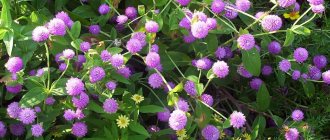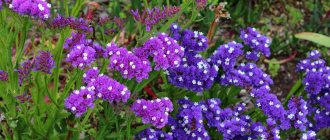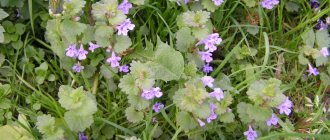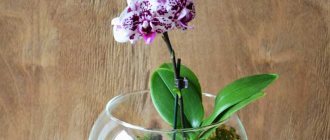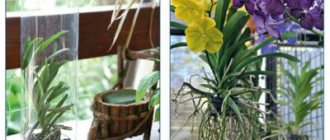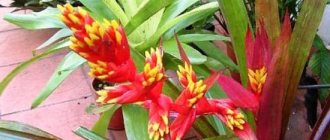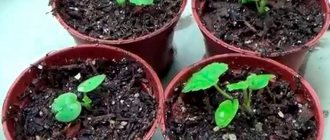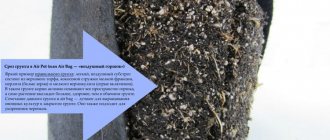Valerian gained fame thanks to Latin treatises, in which the plant was described as a beneficial herb that gives strength and promotes mental concentration.
Valerian officinalis was used not only by Roman doctors, but was also known in Ancient Greece; the Greeks used the herb in the fight against many diseases and mental disorders.
Over the years, valerian has not lost its significance, but rather was included in the list of medicinal plants and is still used in pharmacology in many countries around the world.
Botanical description
Valerian is not difficult to distinguish from other plants if you know its botanical features well: The flowers are small in size - about 4 mm. They can be white, pink, or purple in color. They are collected in small corymbose-shaped inflorescences located at the top of the plant.
The flowering process occurs throughout the summer. At the same time, the flowers emit a fragrant smell that cannot be confused with any other aroma. Even grasses growing nearby can absorb it.
The leaves in the lower part of the plant are long-petiolate, and in the upper part they are opposite. They can grow both in groups and individually. The number of leaves towards the top becomes less and less.
There can be several stems on one bush, but a single option is also possible. The plant reaches a height of up to 1.5 m. The stem is characterized by density, cavity, and has a cylindrical shape.
The root system is loose, small, thick. It has many additional roots of a brownish tint. It is the root that has a large number of useful components. The process of fruit ripening begins at the end of summer and continues in September.
Externally, valerian is similar to some other plants, so when collecting, you should focus on the features indicated above.
The plant blooms from the second year of life from June to August
Caring for valerian plantings
Many gardeners say that without proper fertilizing it will not be possible to get a good harvest of valerian rhizomes, is this really true? The answer is ambiguous: “Yes and no.” The entire growing season of the plant will directly depend on the condition of the area allocated for planting the crop; this applies not only to valerian, but to all cultivated plants.
Fertilizing with valerian will only be needed on poor soils, sandy loam or loamy soils; turf soils with sufficient humus content rarely need additional enrichment.
Mineral and organic fertilizers are applied as fertilizers in the first year of the plant's growing season, during flowering. To increase the yield of rhizomes and raw materials, in the second year of the growing season, flower stalks on the plant must be removed.
During dry periods, abundant watering is needed, at least twice a week. Weeding is carried out as needed. Valerian does not need hilling, except that you can do a couple of loosenings for better aeration and moisture absorption.
The first harvest of medicinal raw materials can be obtained from the bush already in the first year of the growing season, however, the rhizomes of the second year of life are considered the most useful. The medicinal specimens remaining for seeds should be fed with potassium-phosphorus fertilizers and mulched for the winter.
Pharmacological properties
According to pharmacognosy, valerian officinalis has a number of positive effects on the human body, due to which it is used for medical purposes. Pharmacological actions are as follows:
- Calming effect. Perhaps this is the most famous property of this plant. If you ask a person what he would drink “for his nerves,” he will almost certainly answer – drops of valerian. Indeed, the herb helps calm the central nervous system and relieve muscle spasms. This in turn allows you to cope with nervous disorders, sleep problems, high blood pressure, and heart attacks.
- Normalization of the digestive process. Valerian-based products help relax smooth muscles, relieve spasms, and improve peristalsis. Therefore, the plant helps well with problems with the gastrointestinal tract, for example, with frequent constipation and pain in the gall bladder.
- Improving a woman's condition during menstruation. Many girls do not tolerate menstruation well, they experience pressure surges, headaches, and increased irritability. Valerian helps to cope with these manifestations.
- Allergic reaction. The herb calms the nervous system in case of neurodermatitis, which helps reduce the amount of skin rashes and the intensity of itching.
Valerian has a multifaceted effect on the body
. Valerian is harmless and does not harm human health. But you still need to use it in the dosages recommended by the instructions, as side effects are possible.
Growing Valerian
First of all, seeds are collected for future sowing. You can purchase them in a store or find them yourself by selecting several of the strongest specimens in the wild. During the ripening period, the seeds actively fall off, so they are not difficult to collect.
If the material for planting is prepared independently, then sowing is done in early spring of next year. After all, ripening occurs at the end of summer; it will not be possible to collect seeds earlier. It is not recommended to plant them before winter.
Before planting, prepare the soil. It should be loose and free of weeds. It is advisable to purchase ready-made soil in a store.
First, you should plant the seeds in seedling boxes or in greenhouses, then plant them in open ground. For sowing, make several small furrows, add seeds there and cover them with humus to about 1 cm. Next, carefully water the soil and make sure that it is always moist.
After 14 days, the first shoots appear. As soon as the plant has 4 leaves, it is transplanted to a permanent place. Usually planted in rows with a distance of 20 cm.
Further care for valerian involves eliminating weeds and maintaining soil moisture. The grass is usually fed before winter. To do this, use nitroammophoska or another product that contains phosphorus and nitrogen.
Chemical composition
The beneficial and medicinal properties of the plant are determined by the rich and varied chemical composition of valerian officinalis. The rhizome and roots contain up to 3-3.5% essential oil, which includes valerian-borneol ester, borneol esters of formic, butyric and acetic acids, isovaleric acid, borneol, terpenoids camphene, myrtenol, terpineol, limonene, pinene, proazulene.
In addition, sesquiterpenes, alkaloids (chatinin, valerin, etc.), glycosidic compounds (valerosides), valepatriates (valtrate, acetoxyvaltrate, dehydrovaltrate), some ketones, organic acids (palmitic, stearic, acetic, formic, apple and others), alcohols, sugars, starch, tannins, resins, etc.
Valerian officinalis (roots) also contains the following macro- and microelements: potassium (7.8 mg/g), calcium (2.1 mg/g), magnesium (1.8 mg/g), and boron (8 .8 µg/g), selenium (2.89 µg/g), nickel (0.66 µg/g), aluminum (0.41 µg/g), zinc (0.36 µg/g), barium (0 .27 µg/g), manganese (0.2 µg/g), vanadium (0.19 µg/g), etc.
Use of valerian in medicine
Medicinal valerian is actively used in medicine. Homemade medicines are prepared on its basis, as well as pharmaceutical preparations.
What does it help with?
For medical purposes, valerian is used to combat various pathological conditions.
The indications are as follows:
- nervous system disorders;
- epilepsy;
- convulsions;
- increased excitability due to mental trauma;
- mild neurasthenia;
- depression;
- headache;
- neuralgia;
- neurodermatitis;
- failure of coronary circulation;
- neurosis;
- spasms of the muscles of the digestive organs.
Medicines based on valerian pose virtually no danger to the body, but it is still best to take them after consultation with a specialist.
Medicinal and beneficial properties of valerian officinalis
The properties of valerian officinalis (roots) are as follows:
- vasodilator,
- hypotensive,
- antispasmodic,
- anticonvulsant,
- antipyretic,
- diaphoretic,
- appetizing,
- antiemetic,
- carminative,
- anthelmintic,
- sedative (calming),
- tranquilizing,
- choleretic,
- diuretic,
- painkiller,
- detoxification (for bites of rabid animals), etc.
Important! The information presented in the material is for informational purposes only. Before use, be sure to consult a specialist.
What remedies are prepared in folk medicine?
In folk medicine, valerian is used both in its pure form and in combination with other medicinal components.
Traditional medicine considers it a carminative (for bloating), an anthelmintic, and also a digestive aid.
To treat coronary blood flow disorders and tachycardia, the following infusion is prepared:
- pour a tablespoon of roots with a glass of boiling water;
- leave to infuse in a thermos for 8 hours;
- strain.
For the first 14 days, drink a third of a glass three times a day. Over the next 2 weeks, reduce the dosage to 2 tablespoons, then take a tablespoon for a month. Then take a break for a month and repeat the course of therapy.
To eliminate sleep disorders and neuroses, use the following decoction:
- 10 g of dried roots pour 200 ml of boiling water;
- place in a water bath for 15 minutes;
- let it brew for two hours;
- strain.
Take a tablespoon three times a day.
Valerian decoction The following herbs have a good calming effect:
- make a mixture of 1 part valerian roots, 2 parts mint, 2 parts trifoliate, 1 part
- hop cones;
- separate a tablespoon of the collection;
- pour 2 cups boiling water;
- leave to infuse for half an hour, then strain.
Treat twice a day with half a glass.
Valerian can be used not only for oral administration. It is great for preparing a bath with a soothing and relaxing effect. First you need to make the tincture as follows:
- Pour 100 g of raw material into a liter of cold water;
- put on fire, bringing to a boil;
- leave to infuse for 20 minutes;
- strain.
Pour the resulting product into the bath. The procedure time is 15-20 minutes. Valerian essential oil is also ideal for baths. It helps to relax, relieve fatigue and tension.
A bath with valerian serves to calm seizures, the heart and the entire nervous system
Some varieties
Valerian includes more than 250 species, of which at least 30 grow in our country. Most of the varieties have certain healing properties.
Valerian officinalis
The most famous and used in folk medicine is a tall species. It has a straight hollow stem, branched at the top, and a short rhizome, no longer than 4 cm. In many countries, including Russia, it is grown on an industrial scale for pharmaceutical use, although it is not the only medicinal variety. The leaves are dissected, the flowers are small, collected in a large paniculate (less often thread-like) inflorescence. It has good decorative properties when planted in groups. For medicinal purposes, the rhizome is dug up in the second year of life.
Valerian recumbent
A dwarf variety that can be grown as a ground cover. Forms a curtain no more than 7 cm in height. The flowers are small, light, pink-lilac, collected in dense inflorescences up to 3 cm in volume. Tolerates shading well, but in the sun it produces compact plantings with higher decorative qualities. It grows well on its own.
Mountain valerian
Medium-sized variety up to half a meter high. Petiolate large oval leaves form a basal rosette. The panicles of the inflorescences are lush, consisting of many small buds of pale pink color. Unlike the previous species, it will prefer places with partial lighting and is moisture-loving. Flowering is early, in the first two months of summer.
Valerian stone-loving
A low-growing species, excellent for decorating rock gardens and rockeries. Stems are slightly curved, ascending, low. The total planting height does not exceed 20 cm. The leaves are long-petiolate, pubescent, pink inflorescences, racemose. Easily tolerates cultivation on poor rocky soils. When planting in rocky crevices or under stones (for example, in rockeries), you should choose places on the eastern side.
Valerian red
A representative of the subfamily, belonging to another close genus, Centranthus, and is still rarely found in Russian gardens. It grows up to a meter in height, blooms fragrantly and for a long time with small snow-white or crimson flowers, collected in lush dome-shaped inflorescences. In addition to significant growth, the plant tends to grow in width. The most popular varieties for gardens are Coccineus and Albiflorus.
Pharmacy products
Valerian officinalis is widely used in the manufacture of various pharmaceutical preparations and herbal preparations. For example, you can find products such as:
- "Valocormid".
- "Valedrin."
- "Corvalol".
- "Valocordin".
- "Validol".
Many of these medicines are well known and are available in almost every home medicine cabinet.
Valerian is also sold in its pure form in the form of an alcohol tincture or extract. The tincture is made by mixing 70% alcohol and a medicinal plant in a ratio of 1 to 5. It can be taken by both adults and children as a sedative.
Valerian extract is sold in the form of yellowish-coated tablets. Prescribed 2 pills at a time, also as a sedative.
Contraindications for use
It is not recommended to use valerian-based products in the following cases:
- individual intolerance to this herb;
- liver diseases;
- gallbladder pathology;
- increased drowsiness, lethargy;
- depressed state of the central nervous system, developing against the background of any disease;
- children under 3 years of age.
Valerian should be used with extreme caution in the following cases:
- bearing a child;
- breast-feeding.
Valerian should be used with extreme caution during pregnancy.
People undergoing treatment with valerian will have to stop driving. The fact is that the medicine helps slow down reactions and reduces concentration.
Side effects
It is almost impossible to achieve such an overdose of valerian that death occurs. However, with its long-term use and constant exceeding of the recommended dose, adverse reactions of the body may occur.
These include the following:
- drowsiness;
- general weakness;
- state of apathy, depression;
- poor performance.
If such signs appear, you should stop treatment and visit a doctor.
Application in cosmetology
Valerian oil has a calming effect.
For cosmetic purposes, oil made from valerian root is used. Use it to care for the skin of your hands and face. It also allows you to get rid of irritations on the skin, various rashes, and neurodermatitis.
Valerian-based products are also being prepared that can fight wrinkles and have a lifting effect.
Procurement of raw materials
Valerian is harvested in the autumn after the plant has flowered and the stems have turned brown and dried out.
The roots of this plant contain the greatest number of useful components. Therefore, they dig up the roots, clean them well from the soil, wash them and dry them in the open air or in the oven.
Freshly dug roots are white and have no odor. But after drying, they become dark brown and acquire a characteristic aroma.
Thus, valerian officinalis is a healing plant that can have a calming effect on the human nervous system. Therefore, it is actively used in medicine, both traditional and folk. The grass grows in the wild, but if you wish, you can start growing it in garden conditions.
Distribution and habitats
The Mediterranean region is considered to be the center of origin of valerian: Italy, the Balkans, Egypt. From there the plant spread throughout Europe and northern Asia. In Russia, cat grass is found everywhere, with the exception of extremely cold areas with short summers: the Yamalo-Nenets Autonomous Okrug, Chukotka and Kamchatka. The further south the thickets are located, the larger the rhizomes are formed.
Medieval healers revered valerian as a remedy that brought calm to the soul, harmony and peace to the family.
Valerian is a moisture-loving plant. It grows in low-lying meadows with high groundwater levels, peat bogs and grass swamps. Traditional healers look for healing raw materials along the shores of forest lakes and ponds, in damp forest edges and swampy clearings. Valerian root is so in demand in medicine that the plant has been introduced into cultivation and is widely cultivated. Even varieties have been bred (“Maun”, “Cardiola”) that provide raw materials of higher quality than wild grass.
